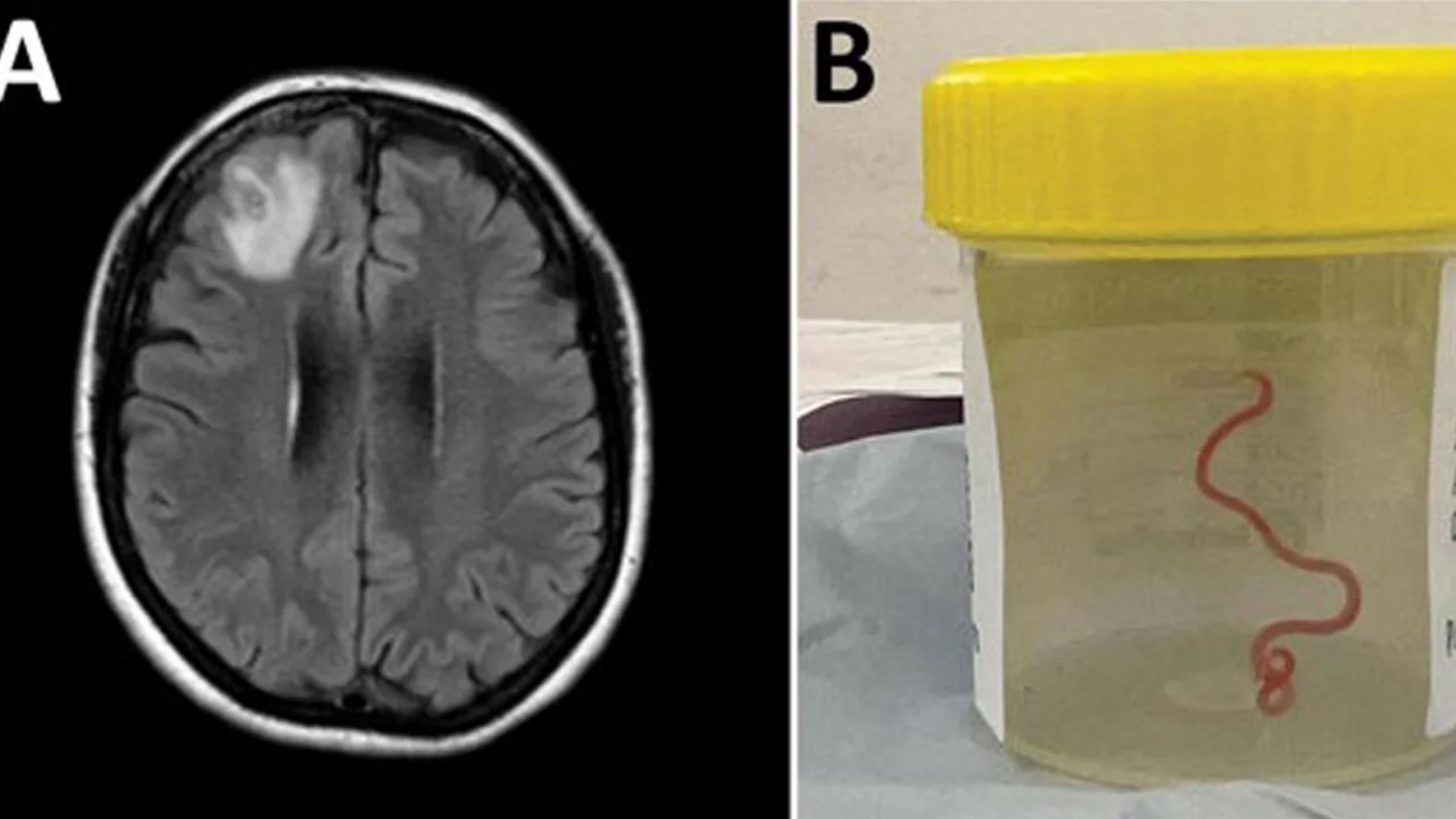(CNN) — When a 64-year-old Australian woman was admitted to the hospital for brain surgery, neurosurgeon Dr. Hari Priya Pandey did not expect to extract a live, 3-inch-long parasitic worm wriggling in her tweezers.
“I only came across the worms through my not-so-good knowledge of gardening. They look terrifying to me and it’s not something I deal with at all,” Pandey told CNN about the world’s first discovery of a live worm inside his stomach. human brain.
Sanjaya Senanayake, an infectious disease expert at Canberra Hospital, told CNN the discovery sparked a frenzy to find out exactly what kind of parasite it was.
A colleague from the hospital lab managed to contact an expert in animal parasitology from a government scientific research agency located just 20 minutes away, and found his unexpected answer.
“We were able to send him the live worm, and he examined it and identified it right away,” Senanayake explains.
Molecular tests confirmed it was Ovidascaris Robertsi, a worm commonly found in snakes, according to a press release from the Australian National University and Canberra Hospital.
“As far as we know, this is also the first case involving the brain of any mammalian species, whether human or otherwise,” says Senanayake, who is also a professor at the Australian National University.
According to the researchers, the patient was living near a lake area inhabited by carpet snakes in southeastern New South Wales. Although he had no direct contact with the reptiles, he likely contracted the worm after foraging for New Zealand spinach, a local leafy vegetable, which he cooked and ate.
Doctors and scientists working on her case hypothesized that the carpet snake may have spread the parasite through its feces to vegetables, which the patient touched and then contaminated with food or other kitchen utensils.
How was the worm discovered?
The woman was initially admitted to a local hospital in late January 2021 after suffering abdominal pain and diarrhea for three weeks, followed by a persistent dry cough, fever and night sweats.
After several months, her symptoms turned into forgetfulness and depression, and she was sent to a hospital in the Australian capital, where an MRI scan revealed something unusual in the right frontal lobe of her brain.
What usually happens is that Australian carpet snakes carry Ovidascaris robertsi and shed the eggs of the parasite in their feces, spreading through plants that are eaten by small mammals and marsupials. At some point, the snakes also eat those infected animals, and then the parasite lives inside the snake, completing the cycle.
In this case, Senanayake said, the patient is likely to be an accidental host of the worm. The parasite is considered highly prevalent and it is suspected that its larvae or young were present in other organs in the woman’s body, including the lungs and liver.
The 64-year-old woman was suffering from forgetfulness and depression before she underwent brain surgery. (Credit: Hussein M/Kennedy KJ/Wilson HL)
Senanayake said the case highlights the growing risk of disease and infection spreading from animals to people, especially as people venture into animal habitats.
“Humans, pets and wild animals have more opportunities to interact with each other and with plants. So this is just another indication that there will be more new infections in the future,” Senanayake said.
According to him, about 30 new infections have been discovered in the world over the past three decades. Of those emerging infections, about 75% were zoonoses, which means that there was transmission from the animal world to the human world, including coronaviruses.
“This ovidascaris infection is not transmissible from person to person, so it will not cause a pandemic like SARS, Covid-19 or Ebola. However, the snake and the parasite are present in other parts of the world, so it is likely that other cases will be identified,” Senanayake said. in other countries in the coming years.
“The other message in this case is about foraging. Foragers should wash their hands after handling collected items. Any forage used in salads or cooking should also be washed thoroughly.”
Other tapeworm larvae
This case from Australia is very different from recent reports of people developing severe headaches due to the presence of Tapeworm larvae in the brain.
This condition is known as Neurocysticercosiswhich can cause neurological symptoms when larval cysts develop in the brain.
According to the US Centers for Disease Control and Prevention (CDC), people become infected with this parasite by eating eggs found in the stool of a person with tapeworm. In the United States alone, there are more than 1,000 cases annually.
Last year, a study revealed that a 25-year-old Australian woman was infected Brain tapeworm larvae After having a headache that lasted for more than a week.
An MRI of her brain led doctors to believe the cause of the pain could be a tumour, but after they operated on her and removed the lesion, they discovered it was actually a cyst full of tapeworm larvae.

“Music buff. Social media lover. Web specialist. Analyst. Organizer. Travel trailblazer.”



:quality(85)/cloudfront-us-east-1.images.arcpublishing.com/infobae/E3MFZXDKZJGKFAMKCA4KUTH3PE.jpg)



More Stories
The Maduro dictatorship arrested three opposition activists after Maria Corina Machado's successful tour of the state of Portugal
The Cuban regime arrests journalist Jose Luis Tan Estrada: human rights organizations demand his immediate release
Fospuca has a parotta of the nose